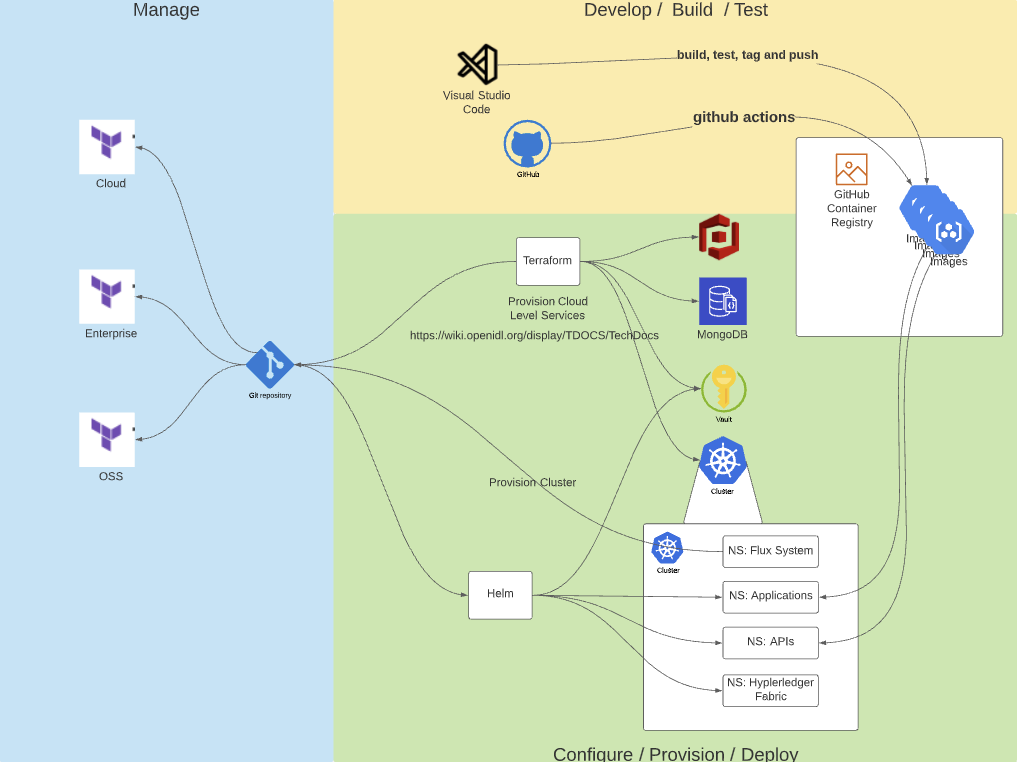openIDL Navigation
Developing for openIDL
openIDL is an open source project. We will follow best practices for such projects.
Let's follow GitFlow: https://datasift.github.io/gitflow/IntroducingGitFlow.html
the branches are:
- main - protected branch from which the UAT and Production builds are sourced
- test - protected branch from which the integration test environment is built
- dev - each developer has their own branch which may correspond to a cloud account
pull requests are used to promote from dev to test and from test to main
github actions are used to build, run unit tests, and deploy to the environment
README.md files provide help in. understanding each sub project and how to test it locally
the repository is a monorepo. It holds all the different components in subdirectories. Each one can be built and tested separately.
common components are developed following this process:
Common Component Development
Development on Local Machine
Create a branch
make update to the common code
make dependency from dependent code as relative path
run tests
commit to branch in git
Testing with Dependent Apps
identify all apps that are dependent and should be updated
for each we need to test them
pull the changed common component code
use relative path dependency
run tests
Deploying as Package
update version of common lib package.json
pull request
merge into main
CI/CD auto deploys new version to github packages
Update and retest dependents
for each dependent including original app that drove the change
update package.json to use the versioned dependency
rerun tests
commit and push updates to dependent app
pull request
merge
CI/CD auto whatever
DevOps Diagram
Here we discuss the DevOps for openIDL.
Since this is a distributed collection of nodes there are network and node level needs.
There are three areas to the dev ops architecture for openIDL
- Manage
- Develop / Build / Test
- Configure / Provision / Deploy
Manage
Managing the configuration in Git is one of the tenets of the architecture.
The git repository is multi-part. The network administrator manages a reference configuration that is used to set up any of the types of nodes. One reference configuration for each type of node. In the data call app, this is a Multi-Tenant Node, a Carrier Node and an Analytics Node.
The node owners will each establish a repository to hold their configuration. This should be linked somehow to the administrator repository, so that updates can be merged using git workflows.
Updates to the configuration for a node in git trigger a workflow that can include a consent step for te node owner before configuration kicks off.
Develop / Build / Test
The Develop / Build / Test phase produces usable artifacts for the Deploy stage.
Developing for openIDL can be done locally. You can create images and save them in your minikube docker or you can just run the particular component out of code.
Configure / Provision / Deploy
The Deploy stage assumes that the assets required (terraform, helm, container images) are all built and properly packaged.
